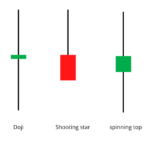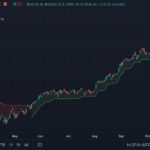Fibonacci retracements are quite an interesting topic. To fully understand and appreciate the concept of Fibonacci retracements, you need to understand Fibonacci series. Some claim that the Fibonacci series originated in ancient Indian mathematical scripts in 200 BC. But its current form was discovered in the 12th century by the mathematician Leonardo Pisano Bogolo of the Italian city of Pisa. Bogolo’s friends called him Fibonacci and it was Fibonacci who discovered the Fibonacci number.
A Fibonacci series is a sequence of numbers starting with zero, arranged in such a way that the value of any number in the series is the sum of the previous two numbers.
The Fibonacci series is as follows:
0, 1, 1, 2, 3, 5, 8, 13, 21, 34, 55, 89, 144, 233, 377, 610…
Pay attention to the following:
233 = 144 + 89
144 = 89 + 55
89 = 55 +34
Meaning the next number is formed by the addition of the previous two numbers and this series continues till infinity. There are some interesting properties of Fibonacci series.
Divide any number in the series by the previous number, so the ratio will always be approximately 1.618.
for example:
610/377 = 1.618
377/233 = 1.618
233/144 = 1.618
The ratio 1.618 is also called the Golden Ratio, it is also called Phi. This property of Fibonacci numbers is also related to our nature. You can see the Golden Ratio in everything from human faces, flower petals, animal bodies, fruits, vegetables to stones and even in space. We will not discuss it now because by doing this we will be diverted from the main topic. But those interested can find examples of the Golden Ratio on the Internet. You will get amazing information. Besides the Golden Ratio, another property of the Fibonacci series is that when a number in this series is divided by the number immediately following it in the series, the ratio remains the same.
for example:
89/144 = 0.618
144/233 = 0.618
377/610 = 0.618
Here, note that 0.618, when expressed as a percentage, is 61.8%.
A similar consistency is also found when any number in the Fibonacci series is divisible by a number that comes two places from itself.
for example:
13/34 = 0.382
21/55 = 0.382
34/89 = 0.382
38.2% in terms of 0.382 percent.
You will see similar results when a number in the Fibonacci series is divided by the number that follows it in 3rd place.
for example:
13/55 = 0.236
21/89 = 0.236
34/144 = 0.236
55/233 = 0.236
In terms of 0.236 percentage, it is 23.6%.
Relevance to stocks markets
It is believed that Fibonacci ratios i.e. 61.8%, 38.2%, and 23.6% can be used in stock charts. Fibonacci analysis can be applied when there are significant ups and downs in prices. Whenever a stock moves sharply up or down, it usually reverts to a level before its next move. For example, if the stock has moved from Rs.50 to Rs.100, it is likely to come back (retracement) to Rs.70 before it moves up to Rs.120.
‘Retracement Level Forecast – The retracement level forecast’ is a technique using which one can identify the level up to which retracement may occur. It is these retracement levels that allow the trader to make new trades based on the direction of the trend. The Fibonacci ratios i.e. 61.8%, 38.2% and 23.6% help the trader to identify the likely range of retracements. The trader can use these levels to trade.
Take a look at the chart below:

I have rounded up two points on the chart, at Rs 380 where the stock started its rally and at Rs 489, where the stock prices were at their highest.
Now I will define the move up to 109 (380 – 489) as the Fibonacci Upmove. According to the Fibonacci Retracement principle, any stock that is going up can go down to the Fibonacci Ratio when it turns in a correction. For example, a stock’s first correction could be up to 23.6%. If this stock corrects further, it may show 38.2% and 61.8% levels as well.
In the example shown below the stock is down to 61.8%, which coincides with 421.9, only after it starts rallying again.

We can also reach 421 by using simple math –
Total Fibonacci Gain = 109
Fibonacci’s 61.8% move = 61.8% * 109 = 67.36
Retracement @ 61.8% = 489- 67.36 = 421.6
Similarly, we can calculate 38.2% and for other ratios. However, we do not need to do this as the software does the work for us.
Here is another example where the chart moves up from 288 to 338. So this 50 point move is a Fibonacci upmove gain. The stock retraces up to 38.2% i.e. up to 319 before resuming its move.

Fibonacci Retracement can also be applied to stocks that are falling, through this we can identify the level from which the stock can bounce back. In the chart below (DLF Limited), the stock dropped from 187 to 120.6 thus forming 67 points as Fibonacci Down.

After falling down, the stock tried to bounce back to 162, which is the 61.8% Fibonacci retracement level.
Fibonacci Retracement construction
As we now know that Fibonacci retracements show changes in a chart that go against the trend. To use Fibonacci Retracement we must first find the Fibonacci move 100% of the price. Whether the move is in an up rally or a down rally. To find 100% of the move, we need to select the most recent highs and lows on the chart. Once these are identified, we connect them using the Fibonacci Retracement tool. This tool is available in many software packages of Technical Analysis like tradingview.com, investing.com, monecontrol.com, etc.
Now let’s understand its usage:
Step 1) Identify the newest high and low. In this case, the low is at 150 and the high is at 240. That is, there is a move of 90 points here. This means 90 points is 100% here.

Step 2) Select the Fibonacci Retracement Tool from the chart’s tools.

Step 3) Now interconnect the Low and High using the Fibonacci Retracement Tool.
 After selecting the Fibonacci Retracement tool from the chart tool, the trader has to click on the first low and drag that line to the high without clicking. Simultaneously with this, the Fibonacci Retracement levels are plotted on the chart. As soon as you have selected both low and high in the software, the process of detecting retracement is complete. After selecting both the points the chart looks like this.
After selecting the Fibonacci Retracement tool from the chart tool, the trader has to click on the first low and drag that line to the high without clicking. Simultaneously with this, the Fibonacci Retracement levels are plotted on the chart. As soon as you have selected both low and high in the software, the process of detecting retracement is complete. After selecting both the points the chart looks like this.

You can now see that the Fibonacci Retracement level is forming on the chart. Using this information you can create positions in the market.
How should you use Fibonacci Retracement levels? (How should you use Fibonacci retracement levels)
Think of a situation where you wanted to buy a particular stock, but you could not buy it because of the high volatility. In such a situation, the wisest thing to do would be to wait for the retracement in the stock. The stock is likely to decline (retrace) up to 61.8%, 38.2% and 23.6% Fibonacci retracement levels.
By identifying the Fibonacci retracement levels on the chart, the trader can prepare for opportunities to enter the stock at these levels. However, remember that like any other indicator, it should be used only for confirmation.
This means that I will buy shares only after the rest of the checklist conditions are met and not just based on Fibonacci retracements. In other words, I would be more confident to buy the stock if:
- A recognizable candlestick pattern is forming.
- Stoploss and S&R levels are matching.
- Volumes are above average.
Along with the above points if the stoploss also coincides with the Fibonacci level, then I know that the trade setup is meeting all the conditions and this will increase my confidence and I will go strong to buy. Remember that the more ways we confirm by studying trends and reversals, the more reliable the signal is. For short trade or long trade, both.
Highlights of this chapter
- The basis of Fibonacci retracement forms the Fibonacci series.
- A Fibonacci series has many mathematical properties. These mathematical properties also appear in many aspects of nature.
- Traders consider using the Fibonacci series in stock charts as it identifies potential retracement levels.
- There are Fibonacci retracement levels (61.8%, 38.2%, and 23.6%), a bullish ascendant could potentially drop back to these levels before retracing the original direction of its trend.
- At the Fibonacci retracement level, the trader can consider opening a new trade. However, he should also confirm the other points given in the checklist before starting the business.

Gaurav Heera is a leading stock market educator, offering the best stock market courses in Delhi. With expertise in trading, options, and technical analysis, he provides practical, hands-on training to help students master the markets. His real-world strategies and sessions make him the top choice for aspiring traders and investors.




